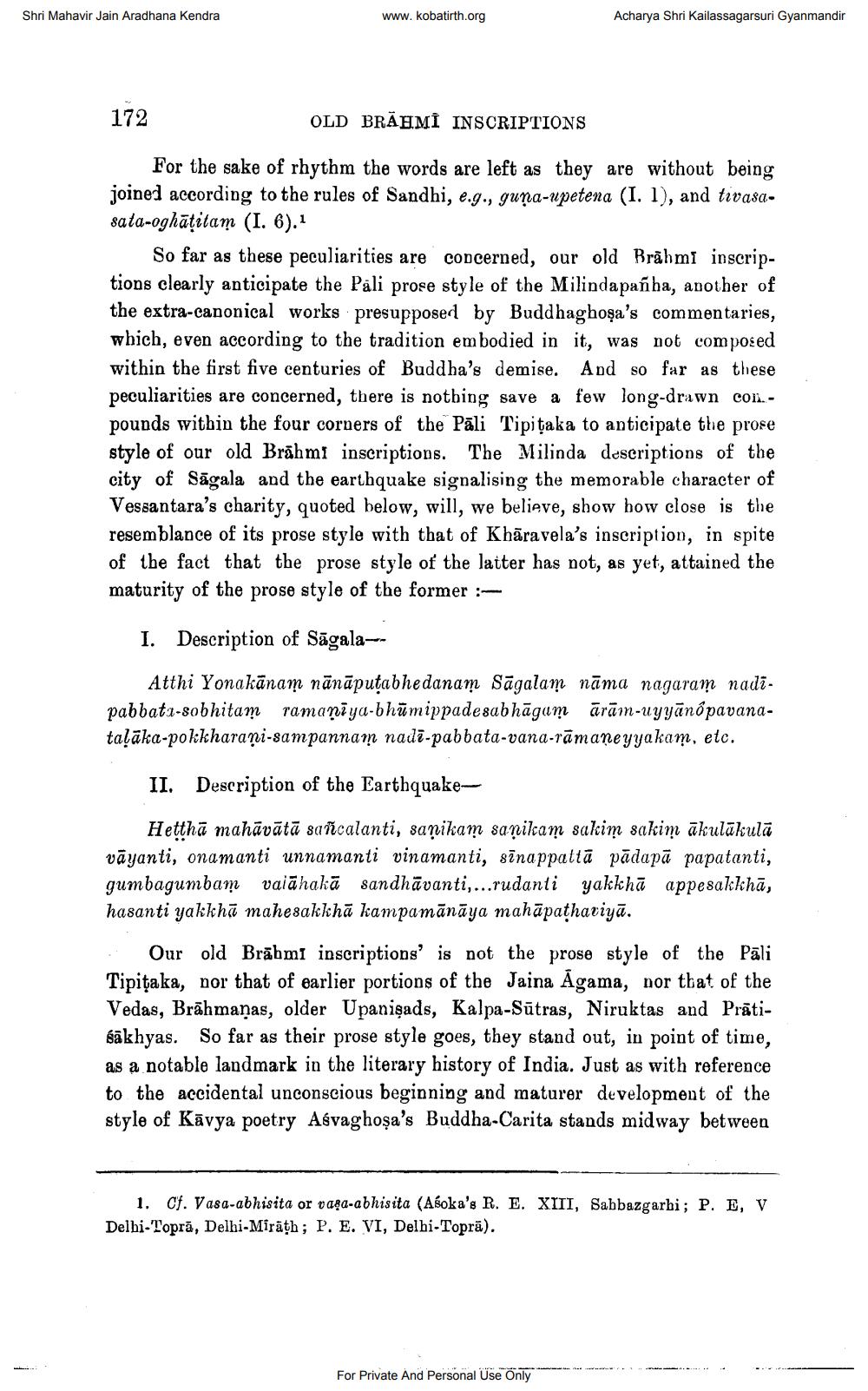________________
Shri Mahavir Jain Aradhana Kendra
www.kobatirth.org
Acharya Shri Kailassagarsuri Gyanmandir
172
OLD BRAHMI INSCRIPTIONS
For the sake of rhythm the words are left as they are without being joined according to the rules of Sandhi, e.g., guna-upetena (I. 1), and tivasa. sata-oghāțitam (I. 6).1
So far as these peculiarities are concerned, our old Brāhmi inscriptions clearly anticipate the Pali prose style of the Milindapañha, another of the extra-canonical works presupposed by Buddhaghoşa's commentaries, which, even according to the tradition embodied in it, was not composed within the first five centuries of Buddha's demise. And so far as these peculiarities are concerned, there is nothing save a few long-drawn conpounds within the four corners of the Pāli Tipitaka to anticipate the prose style of our old Brāhmi inscriptions. The Milinda descriptions of the city of Sāgala and the earthquake signalising the memorable character of Vessantara's charity, quoted below, will, we believe, show how close is the resemblance of its prose style with that of Khāravela's inscription, in spite of the fact that the prose style of the latter has not, as yet, attained the maturity of the prose style of the former :
I. Description of Sāgala--
Atthi Yonakānam nānāputabhedanam Sāgalam nāma nagaram nadi. pabbatı-sobhitam ramaniya-bhūmippadesabhāgam ārām-uyyānopavanatalāka-pokkharani-sampannam nadi-pabbata-vana-rāmaneyyakam, etc.
II. Description of the Earthquake
Hetthā mahāvātā sascalanti, sanikam sanikam sakim sakim ākulākulā vāyanti, onamanti unnamanti vinamanti, sinappattā pādapā papatanti, gumbagumbam vaiāhakā sandhāvanti,...rudanti yakkhā appesakkhā, hasanti yakkhā mahesakkhā kampamānāya mahāpathaviyā.
Our old Brābmi inscriptions' is not the prose style of the Pali Tipitaka, nor that of earlier portions of the Jaina Āgama, nor that of the Vedas, Brāhmaṇas, older Upanişads, Kalpa-Sūtras, Niruktas and Prātisākhyas. So far as their prose style goes, they stand out, in point of time, as a notable landmark in the literary history of India. Just as with reference to the accidental unconscious beginning and maturer development of the style of Kāvya poetry Asvaghoşa's Buddha-Carita stands midway between
1. Cf. Vasa-abhisita or vara-abhisita (Asoka's R. E. XIII, Sabbazgarbi; P. E, V Delbi-Topră, Delhi-Mirath; P. E. VI, Delhi-Toprā).
For Private And Personal Use Only ----------




